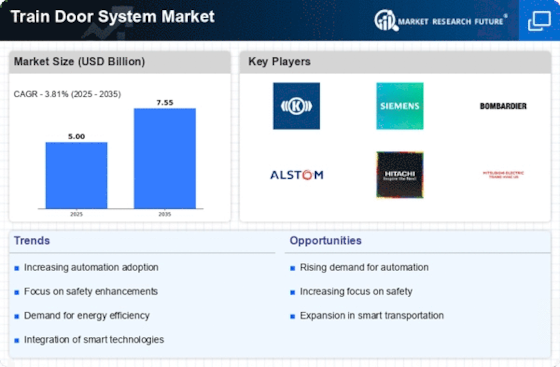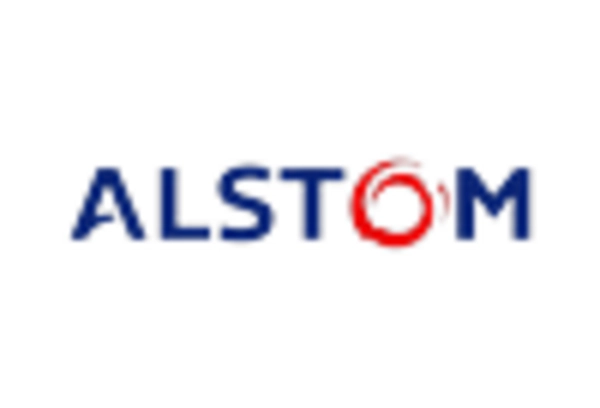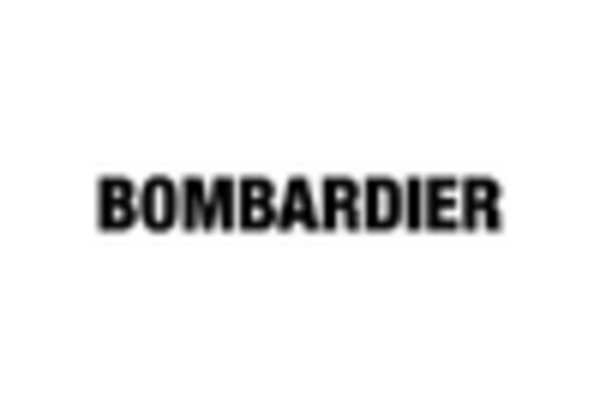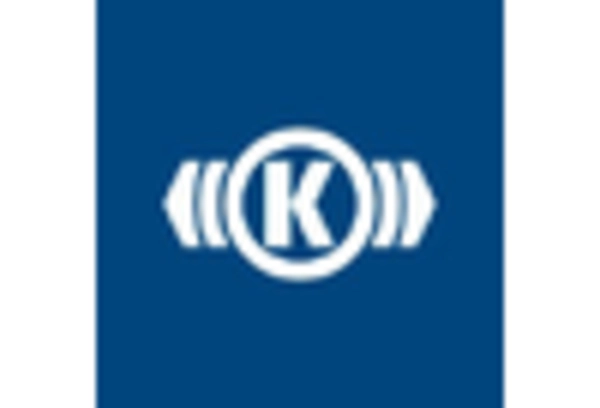The Train Door System Market is currently characterized by a dynamic competitive landscape, driven by technological advancements and increasing demand for safety and efficiency in rail transport. Key players such as Knorr-Bremse (Germany), Siemens (Germany), and Alstom (France) are at the forefront, each adopting distinct strategies to enhance their market positioning. Knorr-Bremse (Germany) focuses on innovation in door control systems, emphasizing safety features and energy efficiency, while Siemens (Germany) leverages its extensive experience in automation and digitalization to integrate smart technologies into its door systems. Alstom (France), on the other hand, is actively pursuing regional expansion, particularly in emerging markets, to capitalize on the growing demand for modern rail infrastructure. Collectively, these strategies contribute to a competitive environment that is increasingly centered around technological innovation and regional adaptability.
In terms of business tactics, companies are increasingly localizing manufacturing to reduce costs and enhance supply chain resilience. This approach appears to be particularly relevant in a moderately fragmented market where several players vie for market share. The collective influence of these key players shapes a landscape where collaboration and strategic partnerships are becoming essential for maintaining competitive advantage.
In August 2025, Siemens (Germany) announced a partnership with a leading technology firm to develop AI-driven door systems aimed at enhancing passenger safety and operational efficiency. This strategic move underscores Siemens' commitment to integrating cutting-edge technology into its offerings, potentially setting a new standard in the industry. The collaboration is expected to yield innovative solutions that could redefine user experience in rail transport.
In September 2025, Alstom (France) secured a significant contract for the supply of advanced train door systems for a major urban transit project in Asia. This contract not only reinforces Alstom's position in the Asian market but also highlights its focus on sustainable transport solutions. The project is anticipated to enhance the efficiency of urban rail systems, aligning with global trends towards sustainable urban mobility.
In October 2025, Knorr-Bremse (Germany) unveiled a new line of energy-efficient train door systems designed to reduce energy consumption by up to 30%. This launch reflects Knorr-Bremse's strategic emphasis on sustainability and innovation, positioning the company as a leader in environmentally friendly rail solutions. The introduction of these systems is likely to resonate well with operators seeking to meet stringent environmental regulations.
As of October 2025, the competitive trends in the Train Door System Market are increasingly defined by digitalization, sustainability, and the integration of AI technologies. Strategic alliances are shaping the landscape, enabling companies to pool resources and expertise to drive innovation. Looking ahead, it appears that competitive differentiation will evolve from traditional price-based competition to a focus on technological innovation, reliability in supply chains, and sustainable practices, thereby reshaping the future of the market.

















Leave a Comment